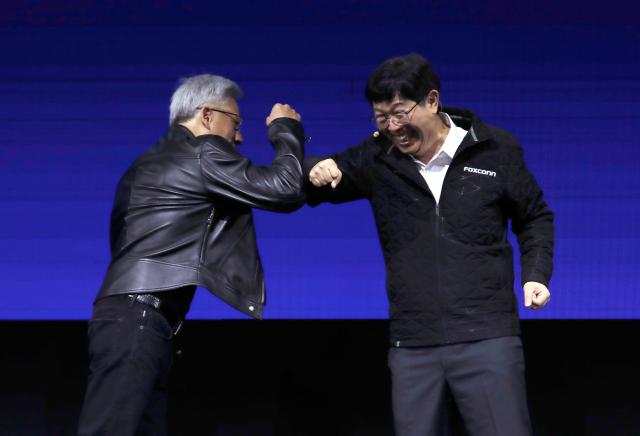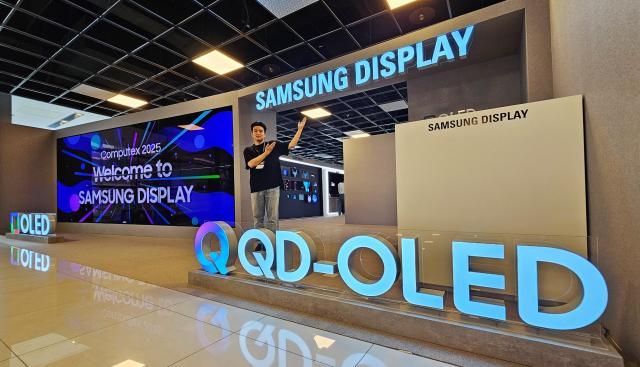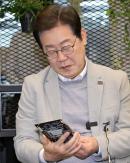
The exhibition kicked off with momentum following a keynote speech on Monday by Jensen Huang, chief executive of Nvidia, who announced plans to build Taiwan’s first large-scale artificial intelligence supercomputer.
The project, developed in partnership with Hon Hai Precision Industry, also known as Foxconn, and the Taiwanese government, is part of Nvidia’s broader strategy to expand its infrastructure footprint in the region.
“Having a world-class AI infrastructure here in Taiwan is really important,” Huang said during his address, adding that the company’s cutting-edge Blackwell AI platform would be made available to researchers, startups and established firms including TSMC.
Huang’s speech drew a full house, with industry leaders including SK hynix President Kwak Noh-jung seated in the front row.
He also detailed Nvidia’s ongoing AI collaborations with Samsung Electronics, Nokia and Kyocera, citing progress on a next-generation AI-based wireless access network (AI-RAN) being developed with Samsung.
In a surprise announcement, Huang revealed plans for Nvidia Constellation, a new office in Taiwan designed to support the company’s growing local workforce.
The weeklong event has drawn a roster of high-profile speakers, including Qualcomm President Cristiano Amon and Foxconn Chairman Young Liu, signaling Computex’s evolution from a regional hardware showcase into a global platform for artificial intelligence and next-generation computing.

South Korea’s tech firms made a strong showing this year.
SK hynix returned with a dedicated exhibition booth to highlight its high-bandwidth memory technologies, including the sixth-generation HBM4, which was first introduced in March at Nvidia’s GTC 2025 conference. The company currently supplies Nvidia with fifth-generation HBM3E 12-layer memory.
Samsung Display, meanwhile, made its Computex debut, presenting a lineup of OLED technologies, including its new Ultra Thin One (UT One) panel, designed for high-resolution, low-power IT devices.
The company also featured a robot demonstration using Rainbow Robotics’ dual-arm mobile unit to showcase the flexibility and lightweight nature of its OLED displays.
Several South Korean semiconductor startups are also aiming to establish their global footprint through the exhibition.
Mobilint is introducing a proprietary neural processing unit for on-device AI applications, while Padu is promoting its customizable solid-state drive platform, Flex SSD.
Computex 2025 runs through May 23 at the Taipei Nangang Exhibition Center.
Copyright ⓒ Aju Press All rights reserved.




